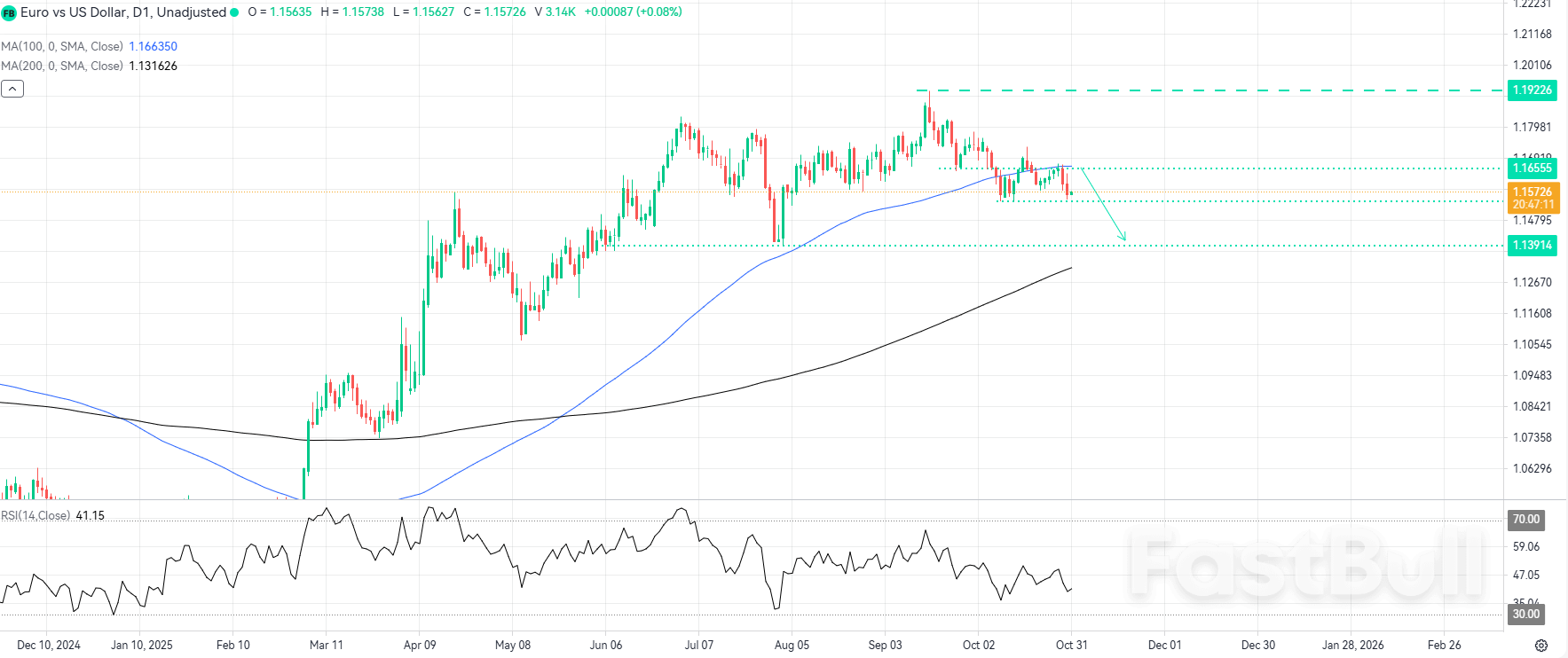The President of the European Central Bank (ECB), Christine Lagarde, indicated that monetary policy is "in a good place" as economic risks subside and the Eurozone (EZ) economy shows signs of resilience. Lagarde specifically noted that de-escalating trade tensions between Europe and the U.S., a lessening of conflict in the Middle East, and the U.S.-China trade truce have all served to mitigate downside risks to growth projections.
The ECB revealed that inflation is near the 2% target and affirmed that it is not pre-committing to any particular rate path. The central bank commented: "The economy has continued to grow despite the challenging global environment." The ECB also credited "The robust labor market, sound private sector balance sheets and the ECB's past interest rate cuts remain important sources of resilience." However, it acknowledged that "The outlook remains uncertain, due in particular to ongoing global trade disputes and geopolitical tensions," and reiterated its determination to ensure inflation stabilizes at its 2% medium-term objective. The ECB is expected to release its updated economic projections through 2028 at the December meeting, and any internal policymaker expectations of persistent below-target inflation would warrant a discussion on further accommodation.
Major geopolitical and monetary developments are reshaping the global market landscape. Earlier on Thursday, U.S. President Donald Trump and Chinese President Xi Jinping concluded talks on the sidelines of the APEC summit in South Korea. The two leaders agreed to a one-year trade truce, which includes the U.S. reducing tariffs on Chinese goods from roughly 57% to 47% and China committing to resume purchases of U.S. soybeans. Trump also asserted that China has agreed to "continue the flow of rare earths, critical minerals, magnets, etc., openly and freely."
Meanwhile, the U.S. central bank delivered a widely anticipated 25 bps reduction in the federal funds rate, setting the target range at 3.75%-4.00%. The decision was not unanimous, with Governor Stephen Miran favoring a deeper 50 bps cut and Kansas City Fed President Jeffrey Schmid preferring to keep rates unchanged.
In its Monetary Policy Statement, the Federal Reserve noted that economic activity continues to expand at a moderate pace, though job gains have slowed and inflation remains somewhat elevated. Policymakers admitted that uncertainty surrounding the outlook remains high and that downside risks to employment have increased in recent months. The Committee also announced plans to end Quantitative Tightening (QT) by halting the reduction of its securities holdings on December 1st, signaling a pause in balance sheet reduction. During the press conference, Fed Chair Jerome Powell spoke of the tension between addressing inflation and supporting employment, stressing that both cannot be solved with a single policy tool. He added that the policy rate is now within the range of many neutral estimates and that any stabilization or strengthening in labor market data would influence future policy decisions. Powell also mentioned a "growing chorus" within the Committee suggesting it might be prudent to wait before making another rate move.

Technical Analysis
EUR/USD reached its local high of 1.1922 on September 17th. Since then, the price has entered a distinct downward correction. The pair recently delivered a decisive close below the 100-period Moving Average (MA), which is currently situated at 1.1593 on the daily chart. This breakdown below the 100-period MA serves as a technical confirmation that the bearish momentum could extend significantly.
The initial downside target for this extended movement is the next major support level at 1.1391, a zone that also converges with the 200-period MA (currently at 1.1161, implying the 200-MA will move higher towards this support).
The Relative Strength Index (RSI) is currently at 40, which is well above the oversold threshold. This neutral positioning suggests that the downward price action has considerable room to run before bearish exhaustion sets in. If the price breaks the immediate support level of 1.1543, the selling pressure is likely to accelerate. Conversely, a strong bullish break and close above 1.1655 would invalidate the current bearish potential and open the door for a continuation of the prior uptrend.
Trading Recommendations
Trading direction: Sell
Entry price: 1.1600
Target price: 1.1391
Stop loss: 1.1710
Validity: Nov 12, 2025 15:00:00













